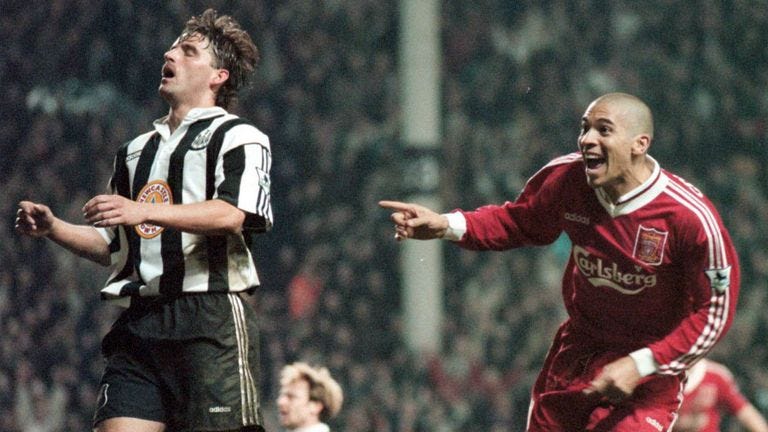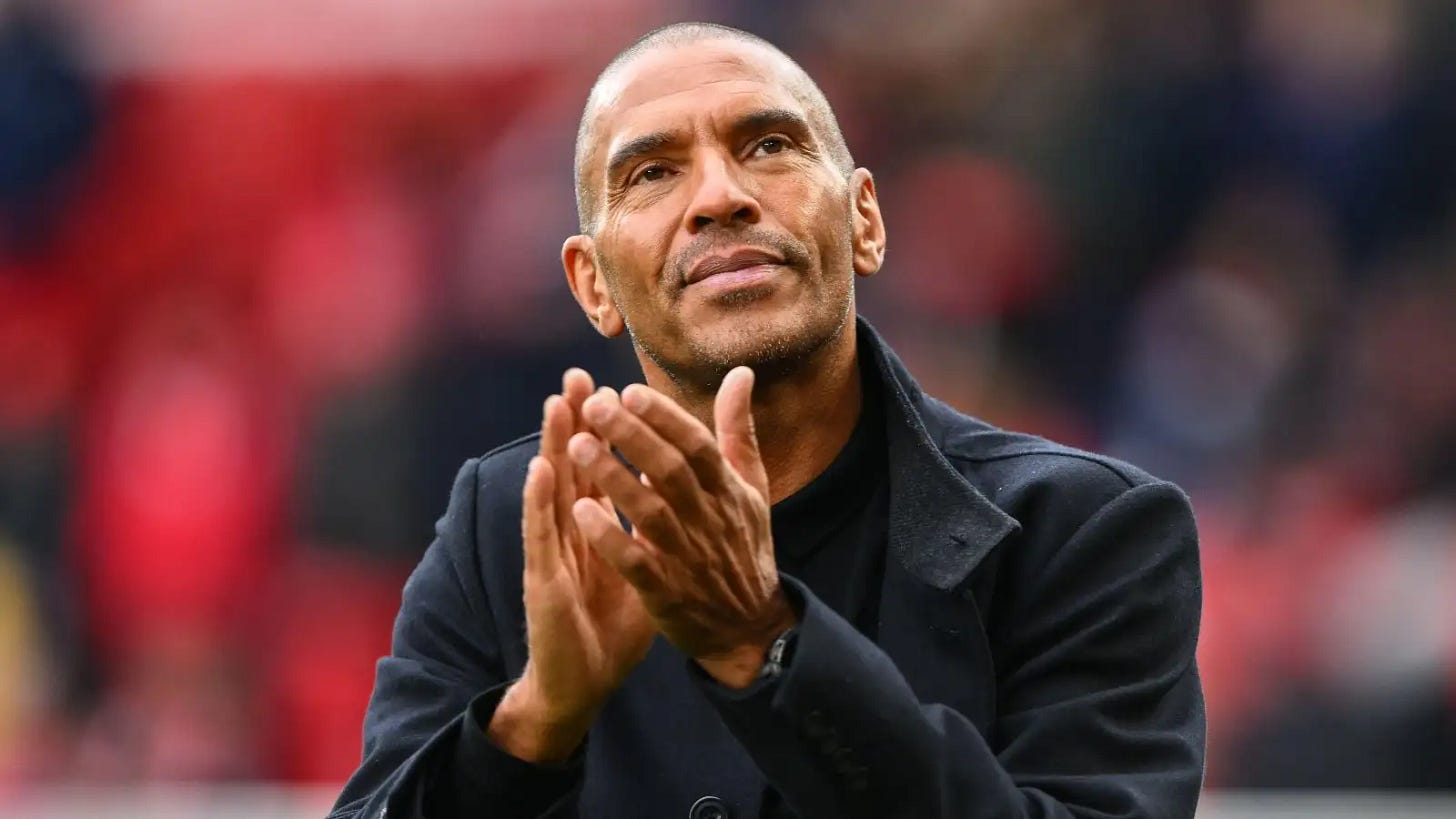'Collymore Closing In' - When Liverpool Last Broke The British Transfer Record
£8.5m for Collymore in 1995 versus Wirtz’s £116m arrival
I’m writing this as Liverpool stand on the brink of history again, ready to shatter the British transfer record with the signing of Florian Wirtz. His imminent arrival for north of £100 million will eclipse every Liverpool outlay since Stan Collymore’s famous £8.5 million move in July 1995, and with add-ons could well eclipse the £115 million Chelsea paid for Moises Caicedo, who moved to West London from Brighton in 2023. I can’t help but draw parallels between this Wirtz moment and the whirlwind that was Collymore’s time at Anfield, his electric debut, that unforgettable winner in that 4-3 win over Newcastle, and the personal battles that followed once he left Anfield behind.
Record Transfer Echoes
Florian Wirtz’s fee, reported at £116 million with add-ons, will rewrite Liverpool’s transfer ledger in a single swoop, yet even at £8.5 million, Collymore’s arrival felt seismic. He became the first Liverpool signing in the Premier League era to smash the British transfer record, when Roy Evans met Nottingham Forest’s valuation. That fee stood until Alan Shearer’s move in 1996 and internally tested Liverpool’s ambition after a lean period. Today’s numbers dwarf those figures, but the emotional stakes remain remarkably similar.
Collymore’s advice to Wirtz is telling. “When you play for a club like Liverpool, it is nervous and it is edgy,” he told Liverpool.com, urging an understated introduction, “let the lad get his foot in the door, get his head down, and almost not reference the fee,” he said. He warned against any Manchester United-style fanfare, pianos, or players performing because such spectacle inflates pressure and scrutiny. His words carry weight not only from someone who held the club’s record tag but also from a man who has lived its highs and endured its darkest moments.
Inaugural Night of Promise
I was on the Kop steps when Collymore first pulled on the red shirt against Sheffield Wednesday. Goalless at half-time we whispered hopes, but nothing prepared us for that moment of perfect technique. Collymore let a high ball drop, swivelled and lashed a left-foot strike that rippled the net. The Kop erupted. In that single instant he repaid a fraction of his fee in joy and belief. His tally of 19 goals in 44 games that first season validated the investment even if consistency would elude him at times.
That goal wasn’t just the opener to a match, it was the first chapter in an epic. He forged a thrilling strike partnership with Robbie Fowler that produced 102 goals between them over two campaigns. Even then whispers surfaced about his temperament, but few could argue with his impact on the pitch.
Anfield’s Greatest Night
If that debut announced him, the April 1996 showdown against Newcastle United consecrated him. Trailing 2-3 with minutes to spare we dared to dream. Collymore seized on a loose ball to equalise and moments later he let fly again, the ball crashing home to seal a 4-3 triumph. Whilst Kevin Keegan slumped, The Kop roared until hoarse, players and fans united in disbelief. It remains arguably the greatest game ever witnessed at Anfield, a testament to the power of never yielding.
Yet for all its drama that night did more than thrill, it encapsulated Collymore’s dual legacy. He embodied Liverpool’s indomitable spirit but also reminded us how quickly fortunes can shift. Inconsistent patches and off-field distractions crept in. A frank magazine comment about underwhelming team-mates ignited dressing room ire, demonstrating how thin the line is between hero and target.
Post-Liverpool Journey
By May 1997 Michael Owen’s meteoric ascent forced Roy Evans’ hand. Owen’s precocious flair and youth offered a new narrative; Collymore, despite his moments of magic, had become expendable. Liverpool recouped £7 million from Aston Villa, still a hefty sum yet a clear signal that football’s business demands adaptability.
At Villa, Collymore never recaptured his red glow. He made 46 Premier League appearances and scored seven goals before loan spells and brief stints in Spain. In March 2001, aged just 30, he retired. That early exit underlined how swiftly the game moves on, and how vulnerable players can be to its relentless pace.
Battle with Mental Health
Beneath the headline moves lay a more profound struggle. In 1999 during his time at Villa, Collymore was diagnosed with clinical depression and borderline personality disorder. He described feeling “drained, like a flat battery” that no thrashing run or rousing chant could recharge. Weeks as an inpatient at the Priory and months as a day patient followed, forcing him to confront stigma head on in a culture that so often equates vulnerability with weakness.
He has since become a passionate advocate. In his book Tackling My Demons and in countless interviews he has challenged football’s casual dismissal of mental illness. “Big money isn’t a new story anymore,” he told Liverpool.com, “the only reason it will be a big deal is if the club indulges it.” His plea is two-fold, limit the spectacle around fees, and provide real support for the human behind the headline figure.
Advice for Today’s Stars
As Liverpool prepare themselves for Wirtz’s induction Collymore’s insights resonate. He commends Manchester City’s low key welcomes for Kevin De Bruyne and Erling Haaland, and warns against extravagant presentations. “Liverpool don’t need to sell themselves to a player based on what he’s cost,” he said, “they can sell a club that is champions of England and England’s most successful club.”
Such counsel goes beyond finance, it emphasises integration, patience and respect for the individual whether a record breaker or a squad signing. In Collymore’s view the best framing for any newcomer is performance, not presentation.
Legacy Beyond Numbers
Stan Collymore’s two seasons at Anfield were a microcosm of football’s beauty and brutality. His debut goal, his partnership with Fowler and that 4-3 masterpiece over Newcastle remain etched in our collective memory. Yet his journey underscores deeper truths, the burden of expectation, the fragility of form and the vital importance of mental wellbeing.
I write this as someone who cheered every thunderbolt he struck, who joined the chorus of “Collymore closing in” and who felt a pang when he left. But more than nostalgia I write with gratitude. Gratitude for the thrill he brought, and admiration for how he’s used his platform to confront stigma and champion support for those fighting their own battles.
As Liverpool step into a new era of megabucks transfers may we heed Stan’s story, welcome Wirtz with measured excitement, shield him from needless spectacle, and remember that behind every record fee lies a person with hopes, fears, and a life beyond the price tag.



